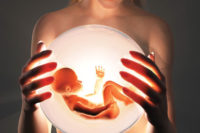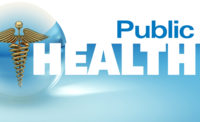Unfortunately, protective controls for U.S. pregnant workers are stalled in decades old concepts. Risk assessments for pregnant worker = unborn child = children must eventually occur. When spoon-fed, occupational safety pros see the light but are fearful or uncertain how to act. In face of uncertainty they do little or nothing -- piecemeal at best.
Uncertainty rules
Safety pros don't have the appetite to make the call on this issue. All seem to be waiting for a higher authority to tell them what to do. My closet peers, people I trust, have told me to give up this topic. Stop writing, stop speaking about it. Piecemeal discussion is OK but don't tackle the big issue all together. The topic is taboo at almost every workplace I visit - and I honor the request clients to be silent about the equation of pregnant worker = unborn child = children.
People know what I'm taking about but they respond in whispers. I've learned that if you start off a conversation with the term "pregnant worker" and especially "unborn child," minds snap shut among safety pros. This attitude poses a risk. About 75 percent of pregnant workers will confirm they are pregnant with a home test kit at about 5.3 weeks. The majority of pregnant workers will inform their employer about the pregnancy at about 10.9 weeks, just before the baby bump shows. This is too late for the employer to fix first trimester pregnancy hazards, such as chemical exposures.
Why do these workers keep their pregnancy secret for so long? Think possible discrimination. The Pregnancy Discrimination Act (PDA), Family and Medical Leave Act, Americans with Disabilities Act and other federal laws designed to help pregnant workers are easily abused by employers. The laws are very weak.
Information is not shared
There is valuable information that should be shared, but rarely is. OSHA's mid-1970 lead standard warned of possible harm to unborn children and the agency recommended a blood lead level limit for women who may become pregnant. By the mid-1980s, 20 percent and maybe more of the Fortune 500 companies at the time established "fetal protection policies." These policies said women cannot work with lead if they are capable of becoming pregnant. I worked for a Fortune 500 company at the time and we had that policy. Exposure controls existed, if well enforced, that could keep the blood lead levels at safe limits (at the time) but work exclusion among women, not men, was the preferred solution pushed by company lawyers and senior management. The U.S. Supreme Court unanimously ruled in 1991 (UAW v Johnson Controls) that fetal protection polices violated the Pregnancy Discrimination Act. The court decision gave U.S. women the right to work in environments that may damage their unborn child. But the decision did not mandate safer U.S. workplaces for pregnant workers.
Changing climate
Things are popping, however. NIOSH awoke and updated 30-year-old American Medical Association lifting guidelines for pregnant workers last year. And OSHA’s 30-year-old chemical management practices are being transformed now to the Globally Harmonized System (GHS) to better protect these workers. "Unborn child" and "breastfed children" are mandatory GHS terms in OSHA's hazcom. The deadline for full hazcom compliance is June 1, 2015.
This past July 2014 President Obama called upon Congress to pass a pending federal safety law for pregnant workers. More than 135 members of the U.S. House are cosponsors of the proposed new law. Not to be outdone, the U.S. Supreme Court, side-stepping the advice of the U.S .Solicitor General, wants a pending case on the safety of these workers to be heard after the court’s summer recess, as early as mid-October or November 2014.
The majority of pregnancy issues are not medical issues. That's why new laws are moving away from "doctors’ orders" to "health care provider recommendations" for normal limitations of pregnancy. Bureau of Labor Statistics Standard Occupational Classification Number 29-9011 means safety pros are "healthcare practitioners." This may qualify them under some new pregnant worker fairness laws as a "health care provider." There's a new way of thinking occurring.
New laws outside of the court’s reach, however, are where safety issues are popping. In the past 24 months, mostly occurring this year, California; Maryland; Philadelphia; New Jersey; New York City; Central Falls and Providence, Rhode Island; Minnesota; West Virginia; and, Illinois, passed safety laws to protect women carrying children. Delaware’s law for these workers is expected to be signed by the governor by the time you read this article. These established laws cover more than 700,000 workers annually.
New safety laws for these workers are already well on their way to passage, perhaps by the end of 2014, for New York, Iowa, Wisconsin, Pennsylvania, and, Georgia.
The language of these new safety laws should excite safety and health pros. With few exceptions, such as Minnesota law referring to a 20-pound lift, safety decisions are open and are no longer the domain of the medical profession. Safety and health pros, like you and me, may now interpret what job tasks are safe for these workers.
A rare embrace
From what I can see and hear, within the U.S., the issue I’m discussing is rarely fully embraced with front-end prevention through an initial risk assessment. Trying to get organizations to embrace the topic is really tough. The government affairs gate-keeper at one professional society told me that the society is not involved in "children's health." A safety conference stopped offering a pregnant workers class because too few people signed-up for the course. Another professional group is hesitant to offer training because the topic has "low peer review."
Last week I met a trainer from a labor union at a client's site (he was conducting safety training; I was do industrial hygiene sampling). When I spoon fed him about the issue he agreed it is very important but has never seen what I'm describing with risk assessments at any work site he has ever visited; he believes it’s a good idea, however. As soon as I mentioned that I'm working with a lawyer who provided an amicus curiae brief in the 1991 case mentioned above to develop a brief for the upcoming Supreme Court case on the safety of pregnant workers, all feedback to me stopped. The union guy I mentioned worked for Johnson Controls during back in the day. He was very sensitive to the topic and the legal impact. This is probably why his union is careful of my involvement and offer to help.
The coming legal battles
I see disputes on the horizon. Years ago a lawyer asked me, “What side of the fence are you going to take on this issue?” He wondered if I would represent the defense (business) or plaintiff (worker) if a tort action were to arise. Generally, an expert witness stays only on one side of the fence – it’s just the way things go. I have always, to this point, represented business interests. I understand, however, that business is not performing good due diligence on this topic. With what I know now, it appears much easier to win disputes on the plaintiff’s side. This is another reason why I continue to push my peers to take action on this topic. It’s hard to dispute that disputes are not on the horizon.
Stirring the pot
When I discuss this topic with women workers, questions usually come up: “Why hasn’t my company told me fully about this issue and help determine what is safe?” My response is always, “This is a question you should direct to your company’s safety pro.”
The core issue here has always been about safety -- who determines what is safe for pregnant workers and how safety will be achieved. New laws are opening up this opportunity for safety and health pros that few know about. It’s hard to judge how the Supreme Court will rule, but the decision one way or another, and coming soon, will greatly stir the pot with how pregnant U.S. workers are to be managed. Again, almost all "discrimination" cases boils down to a safety issue - not so much for the worker, but uncertainty of safety for the unborn child. I feel comfortable making these safety calls for normal conditions of pregnancy. I want other safety pros to get comfortable, too. It’s a tough sell. But just think of the positive impact that safety pros could have. The walls of silence are coming down. Be ready to act.




